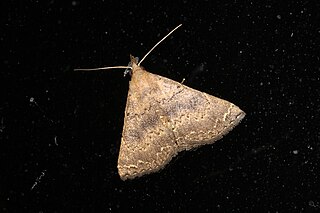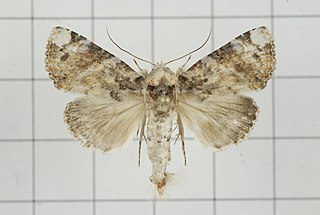Bamra mundata is a moth of the family Noctuidae first described by Francis Walker in 1858. It is found in India and Sri Lanka, Caterpillars are known to feed on Albizia and Arachis hypogaea.
Belciana biformis is a moth of the family Noctuidae first described by Francis Walker in 1858.

Caduca albopunctata is a moth of the family Noctuidae first described by Francis Walker in 1857.

Diomea rotundata is a moth of the family Noctuidae first described by Francis Walker in 1857. It is found in Sri Lanka, the Indian subregion, Taiwan, Sumatra, Borneo, the Philippines and Sumba.

Mecodina praecipua is a moth of the family Noctuidae first described by Francis Walker in 1865.

Nagadeba indecoralis is a moth of the family Noctuidae first described by Francis Walker in 1865. It is found in Sri Lanka, Java, India, Myanmar, India's Andaman Islands, Japan and Taiwan.

Olulis puncticinctalis is a moth of the family Noctuidae first described by Francis Walker in 1863. It is found in Borneo, Peninsular Malaysia, the Andaman Islands, India, Sri Lanka, Taiwan and Japan.

Rhesala imparata is a moth of the family Erebidae first described by Francis Walker in 1865. It is sometimes referred to as an Albizia defoliator. It is found in Sri Lanka, India, Taiwan, Singapore and Borneo.

Perina nuda, the clearwing tussock moth or banyan tussock moth, is a moth of the family Erebidae. The species was first described by Johan Christian Fabricius in 1787. It is found in the Indian subregion, Sri Lanka, to southern China Hong Kong, Thailand and Sundaland.

Dinumma placens is a moth of the family Erebidae first described by Francis Walker in 1858. It is found in the Indian sub-region, Sri Lanka, Thailand, China, Taiwan and Japan.

Amblychia angeronaria is a moth of the family Geometridae first described by Achille Guenée in 1858. It is found in Sri Lanka, northern India, Korea, Andaman Islands to Taiwan, Borneo, Sumatra, Korea Japan and Australia.

Chrysocraspeda faganaria is a moth of the family Geometridae first described by Achille Guenée in 1858. It is found in Japan, Java, Sumatra, Singapore, Borneo, Taiwan, and Sri Lanka.
Idaea marcidaria is a moth of the family Geometridae first described by Francis Walker in 1861. It is found in Sri Lanka, Myanmar, China, Taiwan, Singapore and Borneo.

Sauris interruptata is a moth of the family Geometridae first described by Moore in 1888. It is found in India's north-east Himalayas, Sri Lanka, the Ryukyu Islands, Taiwan, Myanmar, Peninsular Malaysia, Borneo, the Philippines, and possibly the Moluccas and New Guinea.

Aegilia describens is a moth of the family Noctuidae first described by Francis Walker in 1858. It is found in Oriental tropics of India, Sri Lanka, to New Guinea, the Bismarck Islands and Queensland, also on Christmas Islands in the Indian Ocean.

Progonia oileusalis is a moth of the family Noctuidae first described by Francis Walker in 1859. It is found in Sri Lanka, Borneo, India, Taiwan, Japan and the Philippines.

Anuga multiplicans is a moth of the family Noctuidae first described by Francis Walker in 1858. It is found in India, Sri Lanka, Hong Kong, Korea, Taiwan, Philippines and Borneo.

Maurilia iconica is a moth of the family Nolidae first described by Francis Walker in 1857. It is found in Indo-Australian tropics of Sri Lanka, Australia to the islands of Samoa, Rarotonga and New Caledonia.

Beana terminigera is a moth of the family Nolidae first described by Francis Walker in 1858. It is found in India, Sri Lanka, Nepal, Thailand, Myanmar, Peninsular Malaysia, Borneo and the Philippines.
Nola lucidalis is a moth of the family Nolidae first described by Francis Walker in 1864. It is found in the Indian subregion, Sri Lanka, Borneo, Java, the Philippines and Taiwan.















